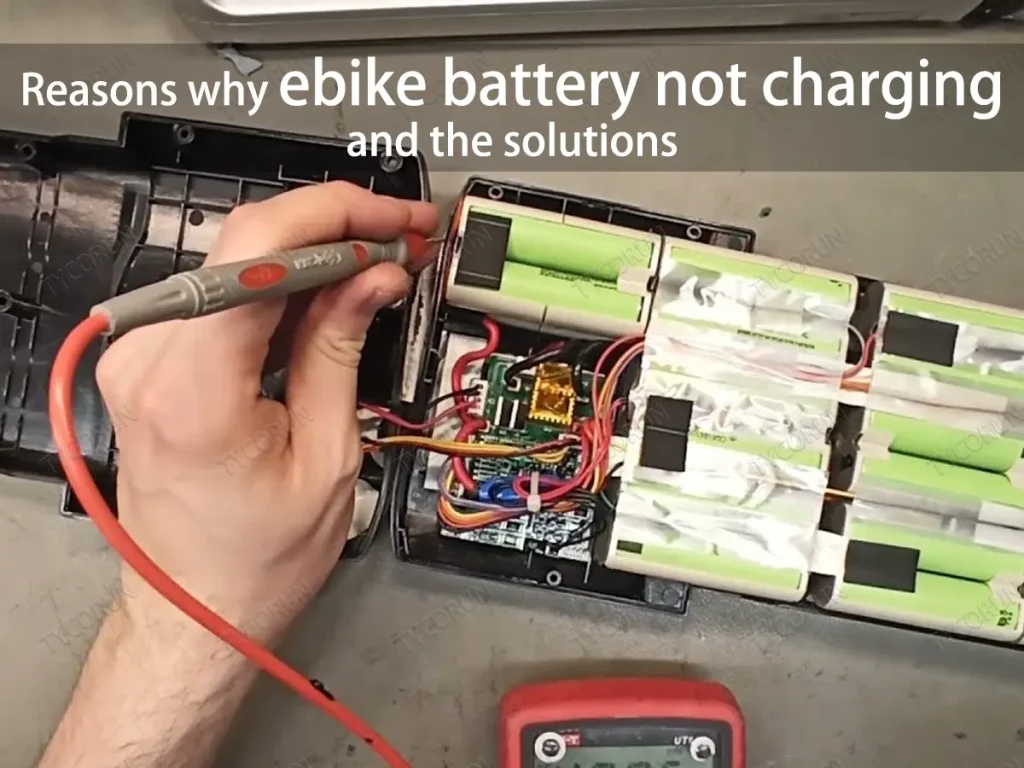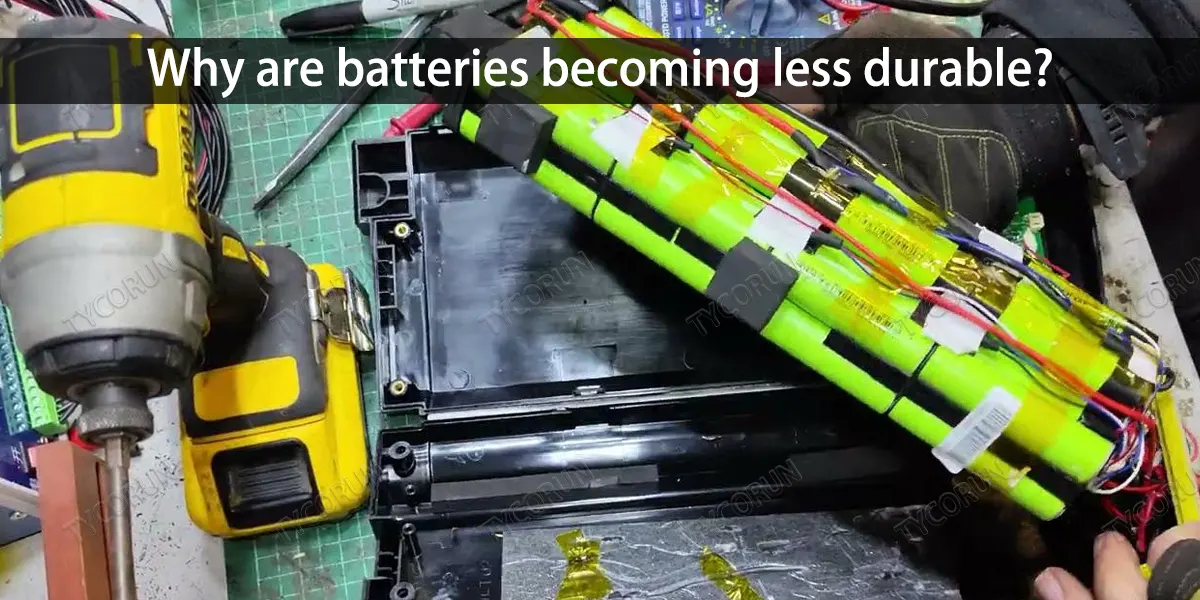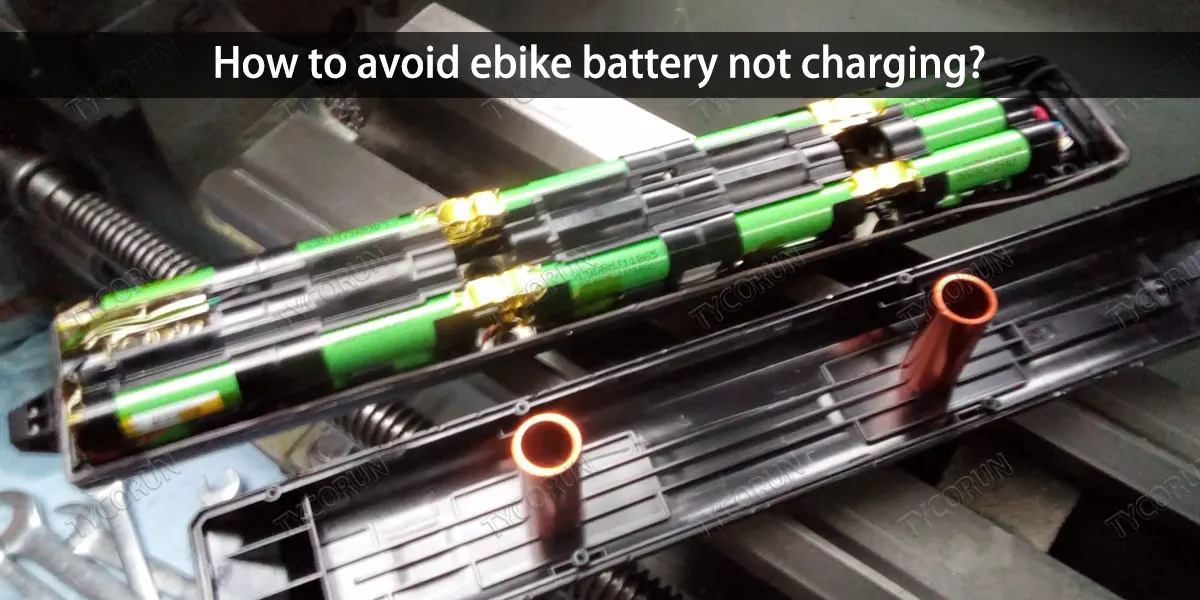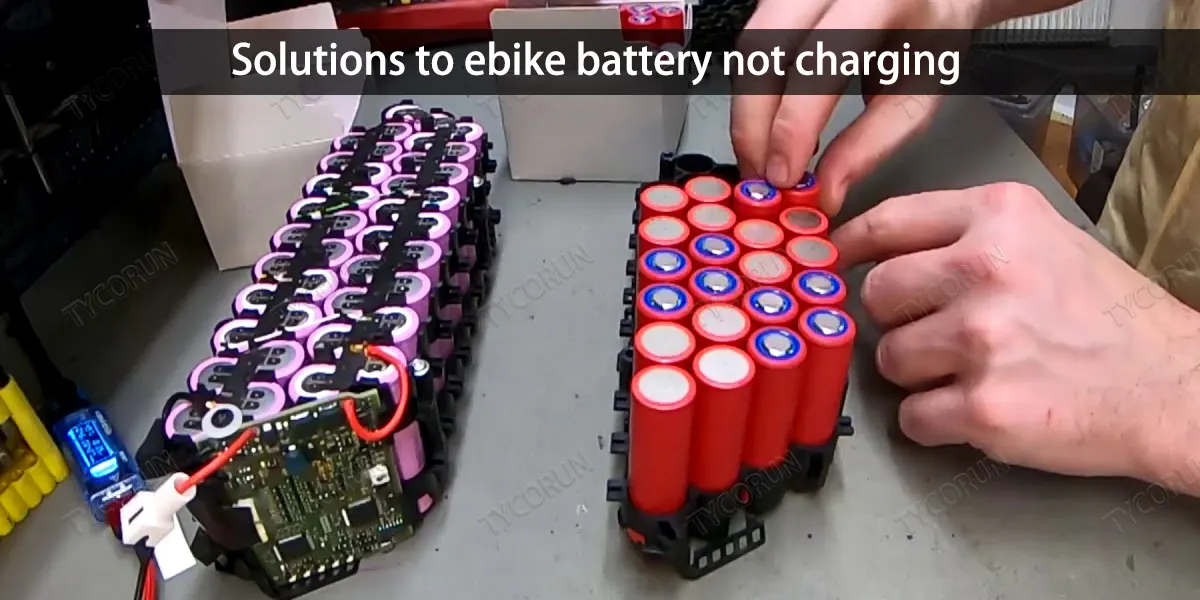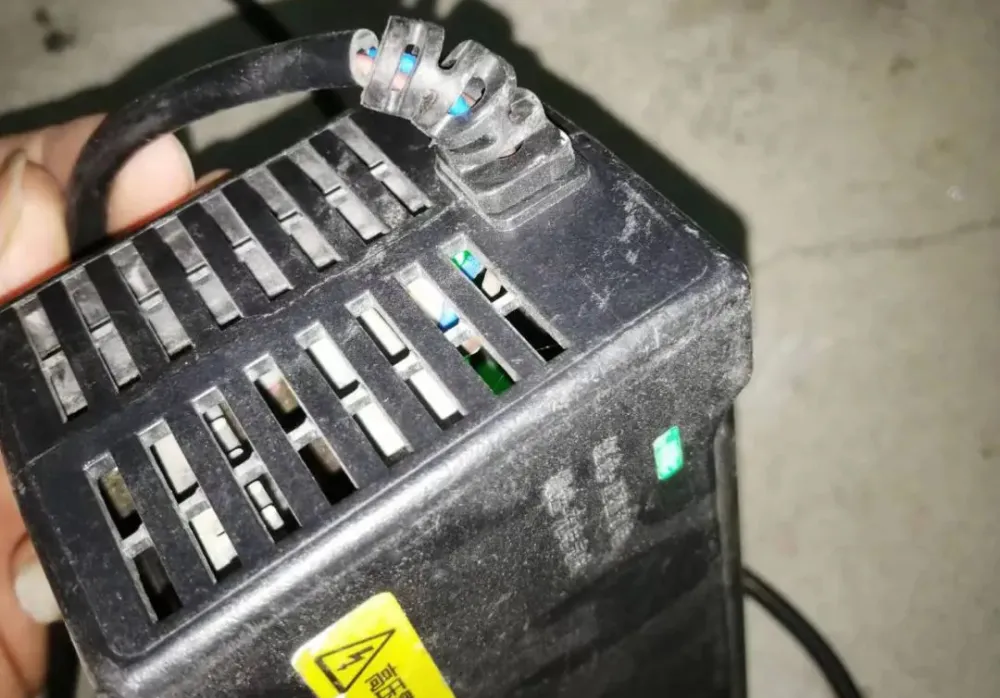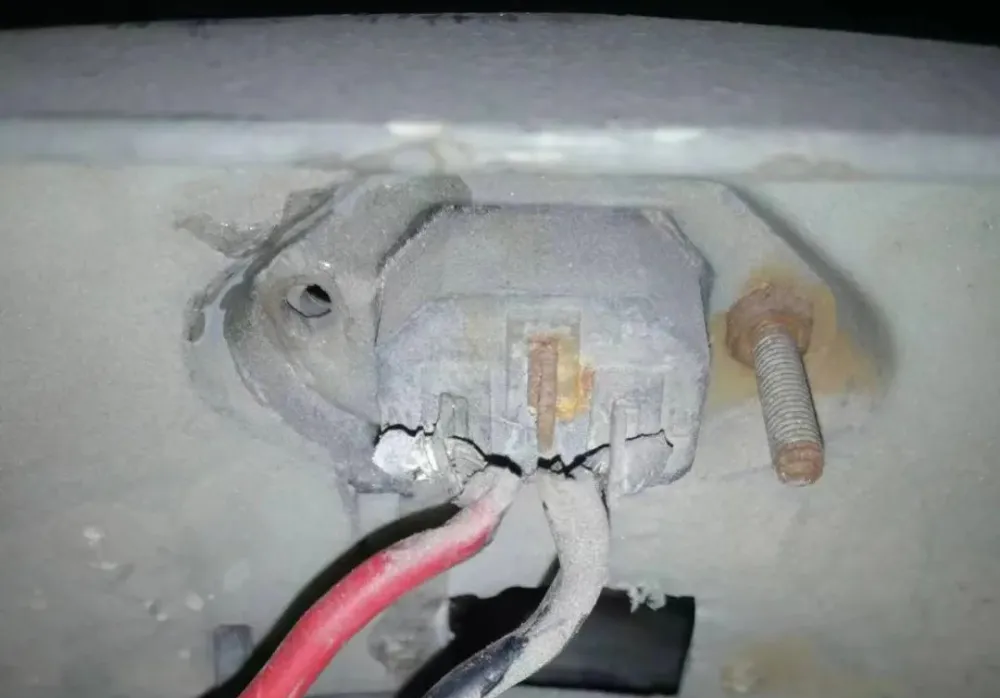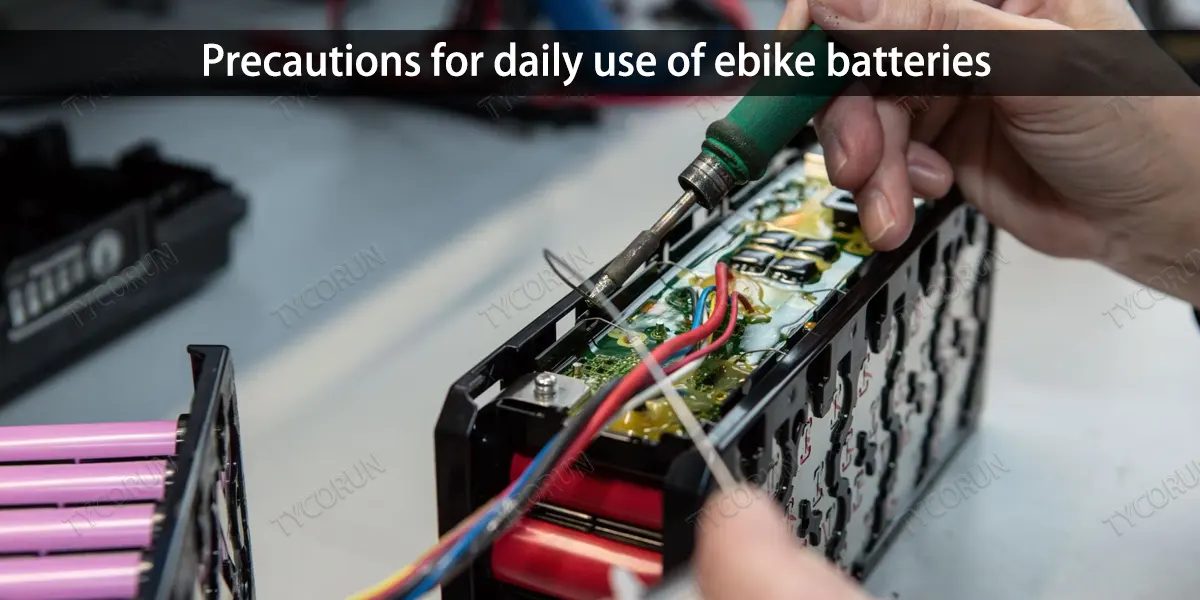Home » lithium ion battery knowledge » Reasons why ebike battery not charging and the solutions
Reasons why ebike battery not charging and the solutions
Some ebike users may find that after long-term use, the mileage that the power wheels battery can support each time it is fully charged becomes shorter and shorter. What’s more, when the battery is not used for a long period, it will become exhausted and unable to be charged. So how to avoid and solve the situation of ebike battery not charging?

How is battery power consumed?
Batteries generally have two sheets, anode and cathode. When the battery is charged and discharged, the electrolyte will chemically react with the active materials on the cathode and anode, causing electrons to cycle back and forth, which is used to charge and discharge the battery.
Lithium battery is a rechargeable battery that uses lithium ions as the active material of the battery. During charging, lithium ions transfer from the anode to the cathode, and from the cathode back to the anode during discharge.
When the power of the lithium battery is gradually consumed, the activity of lithium ions in the battery gradually stops. Once almost all the lithium ions return to the cathode, the battery power drops rapidly, causing the lithium battery to drain out almost instantly.
Why are batteries becoming less durable?
The battery itself
Batteries commonly used in ebikes include lithium batteries and lead-acid batteries. The voltage characteristics of lead-acid batteries are that the battery gradually releases electrical energy over time. However, in the later stages of discharge, the battery voltage has a sudden drop waveform.
At this time, if the battery continues to discharge, it will cause over-discharge of the battery. Over time, the internal balance and consistency of the battery deteriorates, and the battery becomes less and less durable.
As for lithium batteries, some users are accustomed to charging their ebikes only after they run out of power every time. This seems to be “timely” charging, but it does great damage to the battery.
After the battery is overcharged, the anode changes from the intercalation reaction of lithium ions to the deposition of lithium metal on the surface of the anode. There are needle-like lithium metal crystals everywhere on the anode sheet. If the separator is pierced, a short circuit will occur.
At worst situations, self-discharge is aggravated; or even the dendrites are short-circuited, and the current causes the battery temperature to rise sharply, and the electrolyte decomposes and vaporizes.
The battery industry standard requires a battery cycle life of 70% discharge, that is, a 10Ah battery is discharged at 5A for 84 minutes. This indicates that the shallower the battery discharge depth, the longer the battery cycle life, and the longer the battery cycle.
Temperature of the charging environment
According to the ideal battery test result in the laboratory, the charging temperature is best at room temperature, that is, 25℃. However, ebikes are often placed outdoors to charge, which leads to more extreme conditions in summer or winter, prone to ebike battery not charging, or overcharge problems.
Excessive discharging
The lithium batteries used in ebikes on the market are generally battery packs equipped with BMS to monitor and intelligently manage them. The BMS consumes power when working, and over time the battery power will be used up.
Many users leave the batteries in their ebikes when they are not in use. At this time, the ebike’s alarm is still in a power-consuming state, and the power consumption is much greater than that of the BMS.
In fact, even if the BMS and alarm are cut off, there is still a problem if the lithium battery is left uncharged for a long time, because there is always a little reaction inside the battery, or even a slight short circuit, which will cause battery self-discharging.
In the above situations, if the battery is not recharged in time, it will cause the battery to over-discharge, further causing the SEI film on the surface of the battery’s anode to be damaged or even vaporize and disappear, thereby damaging the battery and even posing safety hazards.
How to avoid ebike battery not charging?
- Seperate the battery and the ebike. When the battery is not used for a long time, the battery sheets will have deposition problems, which will lead to ebike battery not charging. Therefore, when the device is not used for a long time, it is necessary to remove the battery of the device, which can effectively extend the battery life.
- Turn off the leakage protector. When an ebike is running normally, if the circuit is overloaded or short-circuited, the leakage protector can reduce the occurrence of electric shock accidents and protect personal safety. However, it should be turned off when the ebike is not running to reduce the electrochemical reaction inside the battery. It can protect the battery to a certain extent.
- Charge regularly. When an ebike is not used for a long time, the equipment needs to be charged regularly. This can maintain the activity of the active materials on the electrodes in the battery and slow down the battery’s degradation.
Solutions to ebike battery not charging
① Check the charger:
Make sure the battery charger is working properly, the plug connection is firm, and the charger output voltage and current match the battery pack requirements. When the green light is on, check to see if there is any looseness or poor contact.
② Check the charging port:
Check the plug of the charging port according to the model. For simple small ebikes, the charging port is at the bottom, which allows users to directly pull out the wire. After pulling it out, there are positive and negative poles (that is, the charging wires), check if there is any sign of poor contact, or if it falls off with a slight pull. Such problems will also cause the ebike battery not charging.
For different models, the position of the charging port is different, and the problem needs to be located according to the model. For example, some ebikes have a charger that comes out from the side, and some have it inside the ebike, which requires the user to remove the seat cushion. Checking this type of ebike is relatively more complicated. Users can go to a specialized ebike repair shop and have the repairman check it.
③ Check the battery connection:
Make sure the battery pack is well connected, check whether the connecting wire is damaged or loose, and whether the connector is clean. Regardless of whether the ebike is two-wheeled or three-wheeled, users can check the iron pieces on the left and right sides of the charging port by shaking the iron pieces with hands or an insulating object.
It doesn’t matter if the iron piece in the middle is checked or not, if there is shaking and ebike battery not charging, it is caused by this charging port. The solution is to replace it with a new charging port. This method is suitable for all ebike or motorcycle battery.
④ Check whether the charging port or plug is corroded:
Even if the plug of the charging port or the connecting cable of the charging port does not fall off, it may cause the charger to fail and ebike battery not charging. Because if the charging port plug or wiring harness connection is used for a long time, green or yellow corrosion will appear, which will affect the use of the charger. Whenever such corrosion is found, it must be removed promptly.
⑤ Check the charger fuse:
If the charger’s fuse is burned out, it will generally cause ebike battery not charging. It may be that the chargers are mixed, causing the fuse to burn out, because the definition of positive and negative poles in each ebike is different. Once the positive and negative poles are plugged in, the ebike that is in the extreme reverse direction will burn out the charger’s output fuse, causing internal failure of the charger.
⑥ Check the charger’s converter:
If the charger’s converter is broken, it will not be able to convert voltage and current, and ebike battery not charging will happen. The green light will stay on when plugged in. Generally, if a part of the charger is broken, users can replace the charger directly.
⑦ Check whether the ebike battery is welded:
This situation usually occurs in new ebikes. In this situation, the internal circuit of the ebike is open for welding, or the battery is faulty. If the charger is good, but ebike battery not charging, the user can use a multimeter to test and find the corresponding point of the problem, and solve it accordingly.
⑧ Check the battery status:
Use a voltmeter or test instrument to measure the voltage of the battery pack to ensure that the battery pack voltage is within the normal range. If the battery pack voltage is too low, the user may need to use a professional battery restorer to repair the battery first.
⑨ Check the protection functions:
Some battery packs may have built-in protection functions, such as over-discharge protection or over-current protection. If the battery pack is in a protected state, it needs to be released first, usually by pressing a specific reset button or connecting to a charger for a period of time.
⑩ Check the ambient temperature:
Lithium batteries are sensitive to ambient temperature. Too high or too low temperature may result in ebike battery not charging. Make sure to charge within the appropriate temperature range.
Precautions for daily use of ebike batteries
① If the device is planned to be stored for a long time, it is best to keep the battery power at about 50%, which is the best storage state of the battery.
② Use the original charger. The original charging equipment come with the product is the most suitable and stable. Other chargers will inevitably have mismatch problems more or less.
③ Do not charge until the battery is extremely low every time. Instead, connect the charger when the battery drops to 30%. It is not necessary to charge to 100% every time. During the use and storage of lithium batteries, the continuous chemical reaction of the battery will cause the generation of gas, so batteries that have been used for a long time will bloat (swell).
If the lithium battery is in a fully charged state for a long time, the activity of the chemical substances inside the battery is the highest at this time, and the reaction proceeds at a faster speed, and swollen battery will occur quickly.
④ Incorrect charging sequence will cause a large impact voltage, that is, surge voltage, and cause ebike battery not charging. The correct charging sequence should be to connect the socket plug first, and then connect the data cable to the ebike, which can reduce the surge voltage.
⑤ Charge in a suitable environment. Overcold or overheated environments can easily affect the electrochemical reaction speed inside the battery, causing excessive or insufficient electrochemical reactions. Therefore, try to avoid using ebikes in extreme ambient temperatures.

